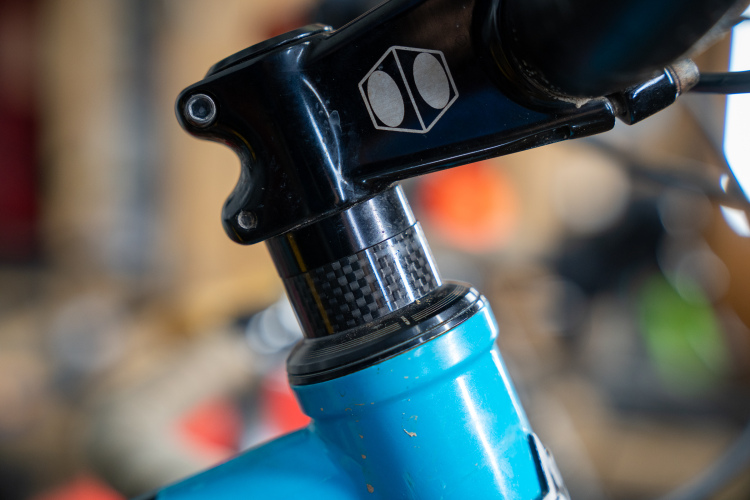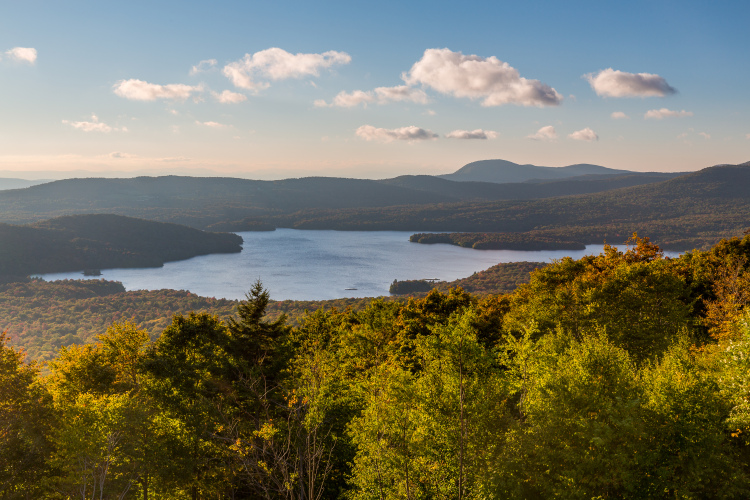I don’t know if you’ve ever experienced this compulsion, but I get this thing, where I’ll stare at a map day in and day out, year in and year out, and I’ll dream of accomplishing incredible feats on my mountain bike. It could be connecting two dots on a map via an unlikely mountain crossing, or finding some way to get from A to B through a region that seems mired in an endless maze of roads and barely-marked trails. Or, it could be reaching a specific, ultra-remote destination–or some combination thereof.
Ever since I moved to Salida, Colorado and started looking at the local trail map, I thought to myself, “man, I should be able to summit Mount Antero on my mountain bike, and finish with a massive 6,000-vertical-foot descent, almost all on singletrack, back into the valley below!”

In case you aren’t familiar with it, Mount Antero is a 14er–one of a select group of 53 such mountains in the state of Colorado that rise over 14,000 feet in elevation. With a summit rising to 14,269 feet, Antero is the 11th tallest mountain in the state–and it has a 4×4 road that runs almost to the summit, and bike-legal singletrack descending down two nearby valleys. One of those valleys forms the separation between Antero and the nearby Mount White, which rises to 13,667 feet. The trail in between the two mountains is known as Little Browns Creek.
The first fall that we lived in Colorado was short-lived before the snow started falling. Then all of 2014 I looked at the peak longingly, but instead rode singletrack that I was more sure would make for really good mountain biking. This year, 2015, the same sort of thing took place: I rode trails that I’d heard good things about, and along with travel to other destinations, the summer seemed to get away from me. However, this year we were blessed with a mild fall, with only one minor snowfall on the high mountains, and high temps in the valley regularly in the mid to upper 70s. As the 10th of October rolled around with still-excellent weather, I knew that I had to pony up and go for it if I wanted to tick Antero off the bucket list this year.

While I would if I had to, I didn’t really want to go it alone, so I recruited my friend Ben to ride with me. As we were planning our excursion the week before, Ben asked, “do you think I’ll be okay descending the mountain on my bike?” “I honestly don’t know, I haven’t ridden all but the final 3 miles of this route,” I responded. While Ben rides a rigid singlespeed 29er, I was pretty confident that he’d be able to handle himself just fine on the mountain. Ben had ridden Monarch Crest to Agate Creek with us earlier in the year, and Agate Creek is home to some massive boulders and extended technical sections. Also, I had no doubt that even if he had to do some serious hike-a-bike, he’d be fine. Ben had already posted a sub-3-hour Boston Marathon finish earlier in the year, and summited a few 14ers the standard way (on foot)–including a pre-dawn summit of Mount Yale. My only question was, “am I going to be able to keep up with Ben?”
The Ride
We met at the bottom of the mountain at o’dark thirty, hopped in one car, and drove up to the ghost town of St Elmo. The rough plan was to pedal up the west side of the mountain via the 4×4 road, then descend down the frontside on Little Browns Creek trail, and then just pick up the second car that we had left. This route would (hopefully) give us easier access to the summit, and a more entertaining ride back down the mountain, as well as a little free elevation on the way down.

By the time we began our pedal from St Elmo, the first morning glow was beginning to shine over the mountain, but it was still frigid-cold. We layered up with all the warm clothes that we had packed, and began a quick warmup spin down the 2WD road, to the beginning of the 4×4 climb on FS Road #277.

As we began the grunt up the 4×4, the road rocketed seemingly straight into the air, quickly leaving the narrow valley behind. After a little bit of granny gear grunting, we were forced to start hiking much sooner than I had hoped. Based on the trail map, I’d guesstimated the ascent to the summit to measure about 7.5 miles in length and 4,500+ feet in elevation gain. Would we have to hike the entire way up there?
Thankfully, after a mile or two of tough climbing the road mellowed a bit, allowing us to pedal along a rushing stream. After about 3 miles of climbing, we took a left across the stream onto FS Road #278, and the 4×4 road again punched straight into the sky, filled with an endless field of loose babyheads. Back to hike-a-biking it was.

While the hours ground on, getting to share the ascent with a friend made the time go by much more quickly. Soon we reached a section of switchbacks in the road, which I’d noticed on the map. Surprisingly, we found these switchbacks very rideable, due to the mellow road grade. Despite now being well above treeline, we found ourselves riding more or less just fine at over 12,000–and then 13,000–feet of elevation.

Eventually we stopped at the 13,000-foot saddle between Antero and Mount White, and scoped the terrain. We spotted where our singletrack should drop off and head down toward the valley below. We continued up the final 4×4 pitch on Mount Antero Peak Road towards the summit.

The final road grunt was steep and extremely loose, forcing us to hike-a-bike almost the entire way. As we had almost reached the end of the road, a couple who had passed us on the way up on a four wheeler stopped to chat on their return trip down. “How far are you planning to go?” they asked.
“Well, all the way to the summit,” we responded.
“The last bit is a hiking trail,” they mentioned, “and it doesn’t look like much of a hiking trail at that.”
“Don’t worry, I have strong shoulders!” I responded, pantomiming hefting my bike onto my back. I already knew that the final .4 miles of distance and about 700 feet of elevation gain was on an “unmaintained trail,” based on my map markings, and based on previous 14er summits, I expected some scree and scrambling toward the top. But when we reached the end of the road, we were faced with a boulder-filled knife edge ridge that looked to provide some technical scrambling right away.

“Should we leave the bikes here?” Ben asked.
“Nah, I want to drag my rig all the way to the summit,” I said. I began pedaling down the goat track of a trail for a few hundred feet, and then quickly switched to carrying my bike. And then, I was faced with the first serious scramble section: a 10-foot-tall cleft in a rock face, undoubtedly followed by more.
Quickly, I reevaluated hauling my bike the rest of the way up the mountain. I asked myself, “what’s my motivation for dragging my bike up there, again?” As I thought about it, the only reason I could find was to take a photo of my bike at the top of the mountain to post to Instagram. While I’m no stranger to arduous hike-a-bikes (heck, we’d already done that for hours that day), hauling my bike to the summit wouldn’t provide me with a rad ride back down. I’d likely end up carrying my rig back to the same point before I could ride it again.
Eventually, we decided that we were out here to have fun, and carrying our bikes for a mere photo op wouldn’t have been fun. So we erred on the side of fun (and of safety–we weren’t even sure if it would have been physically possible to traverse that ridge with bikes on our shoulders) and ditched the mountain bikes at 13,600 feet, finishing the final ascent on foot.


We spent about 45 minutes chilling on the summit, eating lunch, gawking at the absolutely stunning scenery around us, and taking some obligatory summit photos. I’ll let the pictures relate what that iconic mountain top experience was like:




After soaking in the view, we headed back down the mountainside toward the bikes. Now the real fun would begin!
Click here to keep reading part 2!











10 Comments
Oct 21, 2015
Oct 21, 2015
So glad Mongolia has held such awesome adventures for you, and that Singletracks has helped make them possible!! :) Keep on exploring!!
Oct 22, 2015
Oct 20, 2015
Oct 20, 2015
Oct 20, 2015
"So we erred on the side of fun . . . "
Love it.
Oct 20, 2015
Oct 20, 2015
Oct 20, 2015
Oct 20, 2015
Ben doing it on a single speed rigid should earn some type of "Major Award"